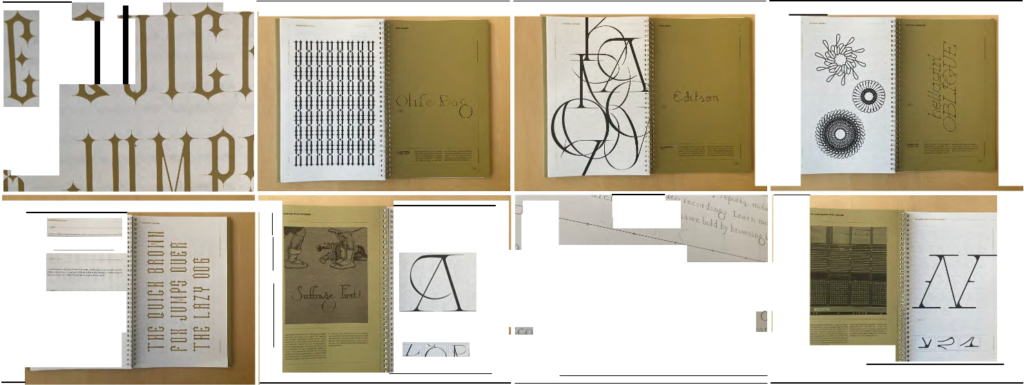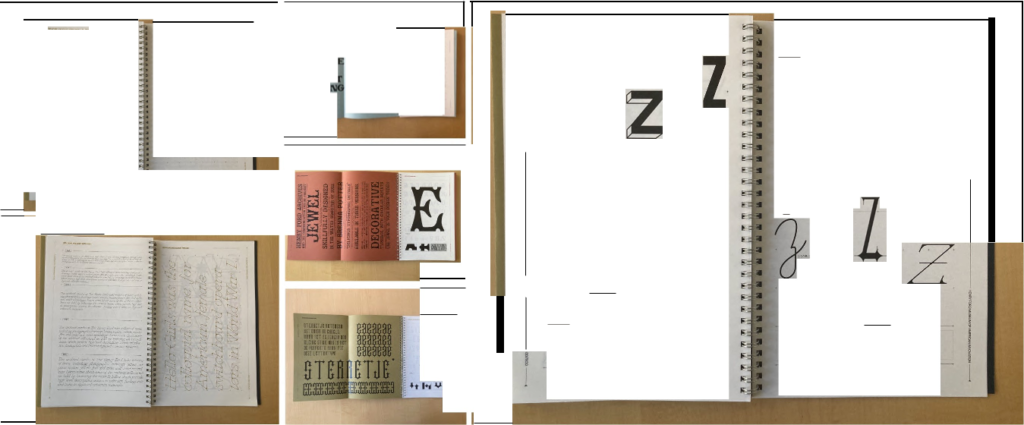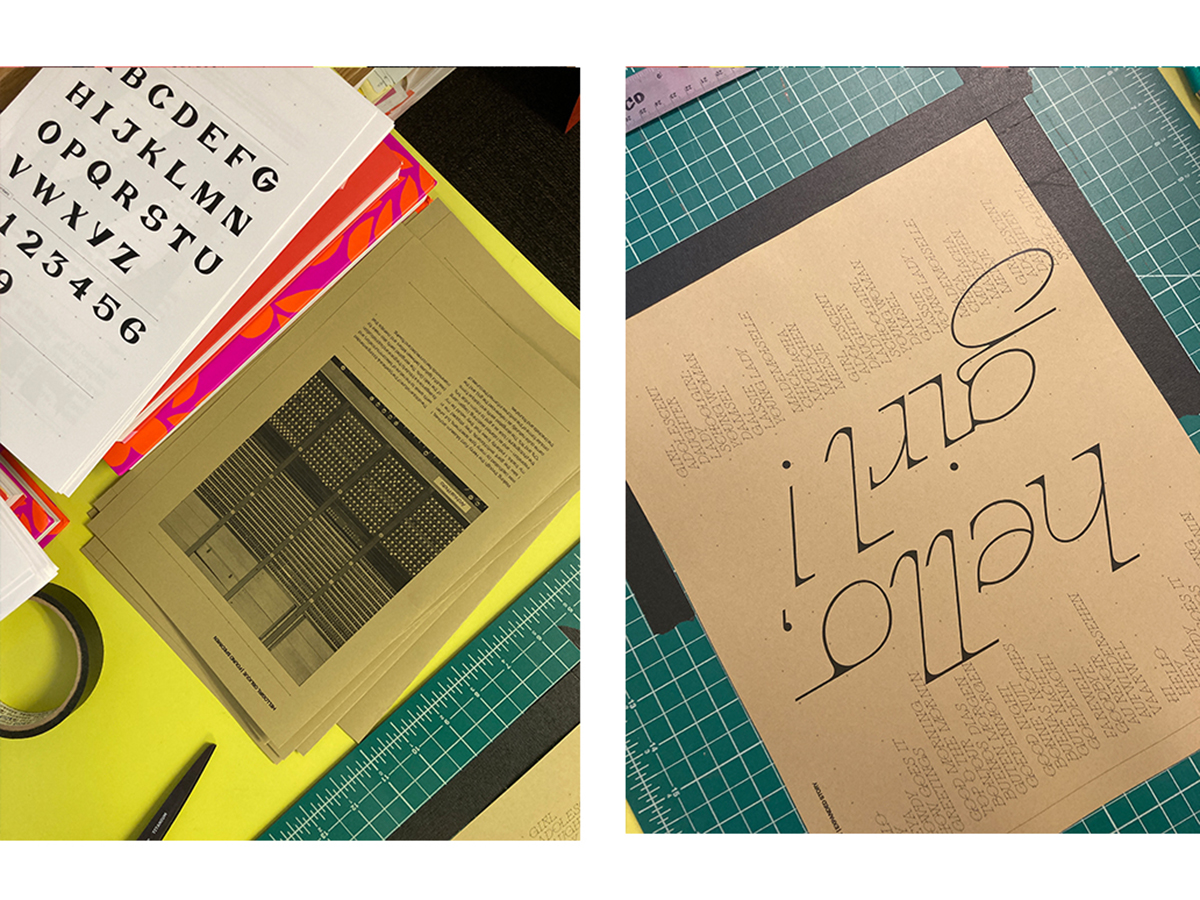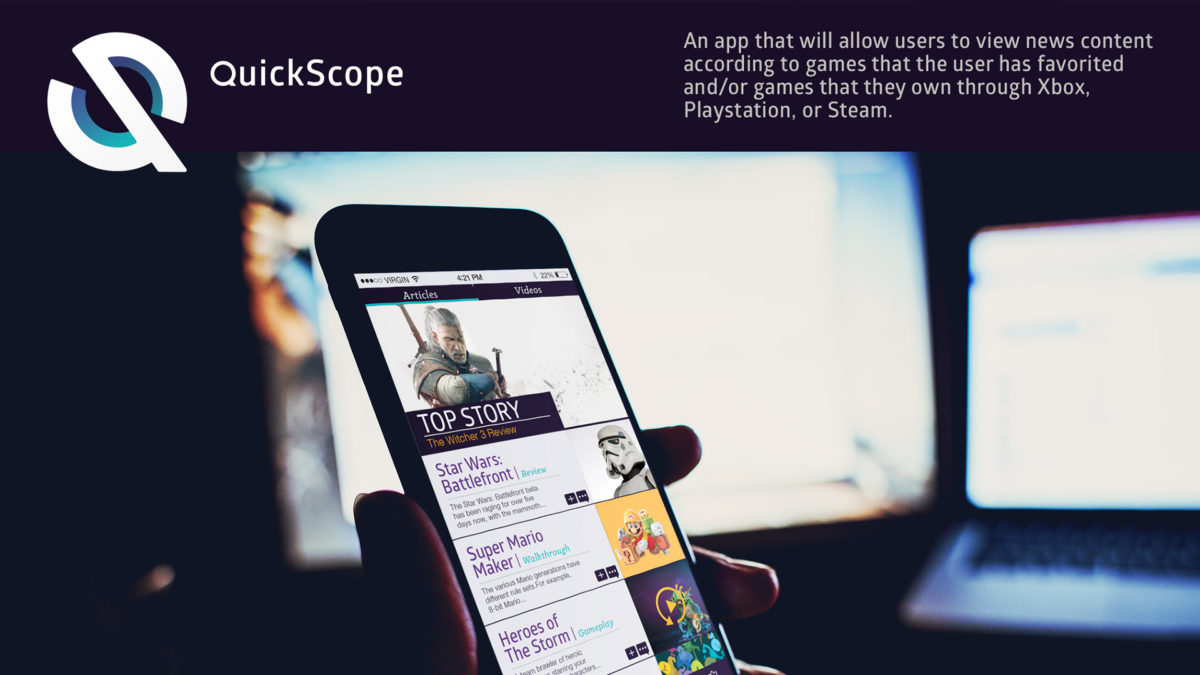Susan LaPorte
Professor
College for Creative Studies
Communication Design and typography have been intertwined from the start, as the urge to express moved from the oral to the written, so has this partnership. Consider the enterprising graphic marks pressed into clay to communicate commerce by Sumerians, hieroglyphs documenting Egyptian rituals, the innovation of movable type first in the east, and then the west, to the typographic alphabet soup from the industry period, and ones/zeros that continue to document our thoughts through the words we write and the typographic expressions we employ to amplify their messages. The shape that typography has taken reflects the taste(s), technology(s), and need(s) of global citizens through time.
The College for Creative Studies / BFA Communication Design department began a partnership with The Henry Ford Museum of American Innovation’s Curators and Archivists. The class was given their vast collections of objects and artifacts as a starting point for their type design inquiry. Each student documented typography/or graphic marks found or embedded within carriages, signage, broadside, machinery, games, as inspiration for a new typeface that expanded the sample and inspired new alphabet of their own vision. Additionally, the goal was for students to see the importance of research around a design can broaden their design practice; that design is not always about serving a client, but also expanding knowledge around our discipline.
A typographic history lecture was shared to broaden their understanding of type, written communication, and the technology that shaped information through the centuries. Students then focused their own critical research, to discover greater relevance of context and meaning to the design of their type specimens. The process of creating were iterative, critical, and resulted expanding the students understanding of design practice and original type designs inspired from the collection.
The results of this class and our partnership with the HFM, and with the financial support of the Ford Fund are a set of publications, entitled Gadzooks: An Embellished Connection Between Like-Minded Characters. It is a documentation of 13 new typefaces, designed by 13 new type designers, expanding our typographic legacy.






This design research was presented at Design Incubation Colloquium 9.1: Kent State University on Saturday, October 15, 2022.


